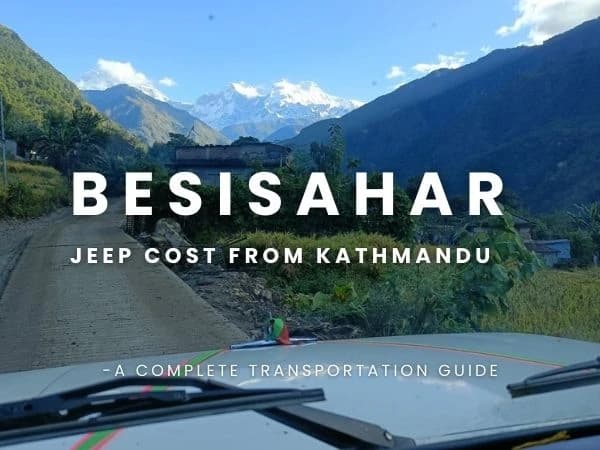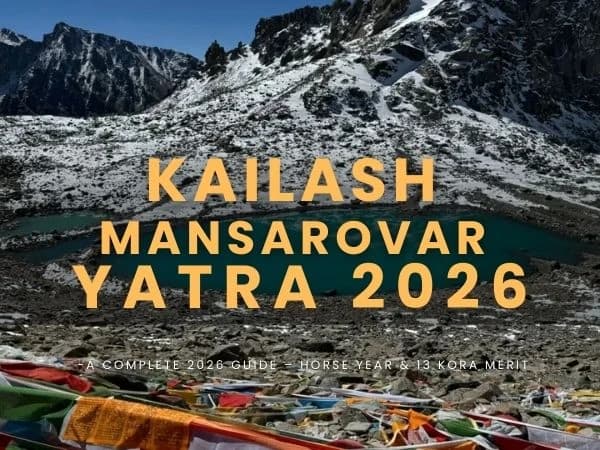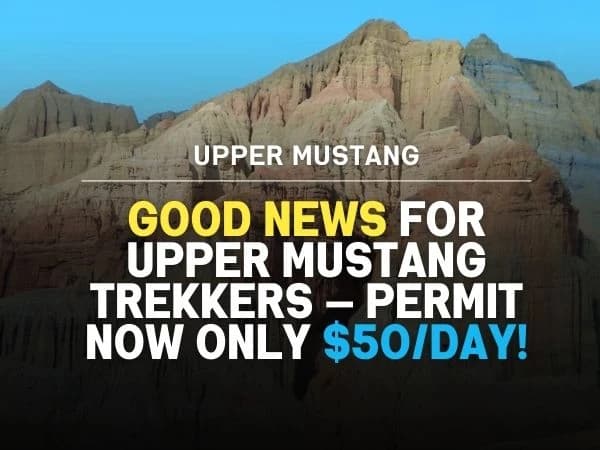Clad in the vibrant colors of festivals and diverse cultures, every next day in Nepal is a festival. A festival that gives reasons to gather around and make memories with the loved ones. Festivals celebrated in Nepal are a cultural manifestation of different sacred rites and rituals performed for various reasons.
Most of the festivals celebrated in Nepal are dedicated to gods and goddesses, to please them for longevity, success, happiness, and agricultural prosperity. The most exciting thing about the festival in Nepal is that the Nepalese prepare different festival based cuisines that are lip-smacking delicious. Among hundreds of festivals celebrated in Nepal, below we have mentioned the top 10 festivals worth traveling to Nepal for if you are planning your next Nepal visit soon.
Dashain: The Longest and Biggest festival of Nepal
The longest auspicious festival of Nepal, Dashain falls in the month of Ashwin (September to October) and is celebrated for 15 long days. Dedicated to Goddess Durga, the festival is celebrated by Nepalese all around the globe. During this festival family reunites, seeks blessings in the form of Tika and Jamara from elders, performs pujas, and savor different delicacies. The most exciting part of the Dashain is that you can observe the colorful kites flying in the sky, families playing cards together, people beautifully dressed in new clothes and children's and adults enjoying swings.
The 15 days long celebration has the main 6 days, starting with the Ghatasthapana where people sow the holy Jamara and end with the Kojagrata Purnima, a full moon where people worship the goddess of wealth and luck. In between the first and last day, the 7th day of the festival is celebrated as Fulpati, where Brahmins carry the holy Jamara, banana stalks and sugar cane tied in the red cloth from Gorkha to Kathmandu. On the 8th day of the celebration, the livestock is slaughtered and the families take the meat as a Prasad. Maha Navami, on the 9th day of the festival, people slaughter animals to avoid traffic accidents in the coming year. The grand celebration happens on the 10th day, Vijaya Dashami. On the Dashami, the elders of the family put Tika on their children's forehead and bless them. People visit their relative's houses to seek blessings and to reunite as a family.
Key attraction: Flying kites, Playing cards, Family gatherings, Offering blessings, and Tika, Worshipping the Goddess Durga.
Tihar: Festival of Lights
The second grand festival of Nepal, Tihar is the festival of lights, colors, and beautiful flowers. Celebrated for five consecutive days, the festival honors Yama, the God of death, and Laxmi, the goddess of wealth.
The first day is celebrated as Kag Tihar (crow). The Kag is believed to be the messenger of death; hence, they are worshipped and offered food to make them happy, with the hope that they will not bring any bad news to their house. The second day is Kukur Tihar (Dog). In the Hindu religion, dogs are believed to be the guard of Lord Yama and are also responsible for leading the dead to heaven. On the third day, people worship cows. According to Hindu mythology, the holy cows are considered to be one of the incarnations of Goddess Lakshmi. On this day, people clean their house and light bright, colorful lights, oil lamps to make their house beautiful. The decorations are mainly done to welcome the goddess Laxmi in their house. The 4th day marks three major celebrations of Goru Puja (oxen), Govardhan Puja, and Mha Puja. On this day, people worship oxen, Govardhan Parvat made up of cow dung, and lastly, the Newari community celebrates Mha Puja. This day marks the beginning of the New Year and is celebrated by worshipping one's soul. The last day of the Tihar is Bhai Tihar (brother). On this day, sisters worship their brothers for their longevity and prosperity. Sisters adorn their brother's head with the beautiful Sapta Rangi Tika (seven colors). Aside from the Tika, the sisters offer sweets, dry fruits, Sel roti, and many more to their brothers. The brothers in return give gifts, blessings, and money with an assurance of protecting their sister's rest of their lives. From the second to the last day of Tihar, children play Deusi and Bhailo by visiting every household in the locality. The children gives blessings in return to the gifts, foods, and money offered by the host house.
Key attraction: Beautifully decorated houses, temples and streets, Different rites and rituals performed in the houses, Sel roti (Nepali Doughnuts), Sweets and Colorful Tika, Worshipping Goddess Laxmi- Goddess of wealth.
Lhosar: The vibrant New year of Indigenous Community
The new year of the indigenous communities, Lhosar is celebrated thrice in a year. They are namely, the Sonam Lhosar, New Year of the Tamang community celebrated in first moon day on the month of Magh (March). Tamu Lhosar, New Year of the Gurung community celebrated in the 15th Poush every year (December/ January) and Gyalpo Lhosar, New Year of the Tibetan community celebrated in the 29th day of 12th month of Lunar calendar, that is celebrated for 3 days.
People of the respective community celebrate the day by worshipping Gods and Goddesses, gathering around with friends and families, preparing and savoring different cuisines. With people adorned in their cultural dresses, singing, and dancing in their cultural song, the celebration of the festival offer pleasure to the eyes. A major happening event is organized in Kathmandu, Tudikhel. Apart from this, the community also prepares a local beer made from Chhaang to celebrate the day.
Key attraction: Beautifully decorated monasteries, People adorned in cultural dress, Delicious Cuisine
Tiji Festival, Mustang: The festival for World Peace
Tiji festival is the most colorful festival of the Mustang region. Tiji meaning "pray for world peace" is a festival celebrated to wish for world peace. Celebrating the victory of God over Demon and Good over Evil, the Tiji festival is a fascinating three days festival consisting of Tibetan rituals. During this festival, people chant mantras and dance wearing traditional dresses.
The Tiji festival dances are organized by the Chodhey monastery. On the 1st day of the festival, you will witness the beautiful "Tsa Chham" dance performed by Monks that highlights the story of "Dorjee-Sonam"- a reincarnated Buddha to a demon. The monks will enact the harassment of the demon on the people of Mustang. On the second day "Nga Cham" is performed. In this act, the Dorjee Sonam tries to return the demon to the Buddha Realm. During these acts, you will be intensified by the way the Monks present themselves through their actions. On the 3rd day of the festival, the monks perform "Rha Chham" dance where Sonam triumphs over the evil demon and vanishes from Mustang.
Key attraction: Traditional dance, Meaningful acts
Buddha Jayanti: Birthday of Lord Gautam Buddha
A special day for Buddhists and Hindus, Buddha Jayanti marks the birth of the light of Asia, Gautam Buddha. Celebrated on the full moon day of Baisakh (April/May), on this day, the followers of Buddha recalls his contribution for the establishment of World Peace.
To celebrate the birth, people visit the Buddhist shrines that are decorated with prayer flags and colorful lights and butter lamps. A major event is organized in the Lumbini, the birthplace of Lord Buddha, and other Buddhist shrines of the valley like Boudhanath and Swayambhunath. During this festival, the Monks chant mantras and offer prayers while other Buddhist followers eat vegetarian foods and donate foods, clothes to the poor. People cook kheer and porridge to celebrate the day.
Key attraction: Thangka paintings, Monks chanting holy Mantras, Beautifully decorated Buddhist monasteries and shrines.
Indra Jatra: Largest street festival of Nepal
Also known as, Yenya, Indra Jatra is the largest street festival in Nepal. The festival falls on the month of Bhadra (August/September) and lasts for eight days. Dedicated to the mother-son duo, Indra, the god of rain and Dagini, the festival is celebrated to pray for a good harvest. During this festival, people dance, sing, organize the chariot procession, and worship God and Goddess. The masked Lakhey dancers, dance on the streets and commemorates the day when God Indra came to earth looking for a flower for his mother Dagini.
The celebration of the festival is divided into two parts, the Indra Jatra and Kumari Jatra. The celebration of the Indra Jatra includes the erection of the 10m long flagpole outside of the Hanuman Dhoka and the exhibition of fierce faced Bhairava's mask. On the first day of Kumari Jatra, the family of the deceased light butter lamp in the memory of their loved ones. Whereas on the Chariot procession of the living goddess Kumari, people line up to catch a glimpse of the beautiful Newari girl representing Goddess Taleju. The chariot is strolled down the alleys of the Kathmandu followed by two other chariots of Ganesh and Bhairav. At the end of the festival, the flagpole is lowered to mark the end of the eight days long festival.
Key attraction: Bhairav's Mask, Lakhey Dance, Kumari-the living Goddess, Elephant mask dance, Chariot procession.
Holi, Fagu Purnima: The festivals of colors
According to Hindu mythology, the festival trace back to the time of Mahabharat. Legend says that the arrogant King Hiranyakashyap didn’t allow people to worship for Lord Vishnu. However, the doting and ardent devotee of Vishnu, Prahlad opposing his father, worshipped the Lord Vishnu. It was when the king ordered his sister Holika to burn the prince on full moon night. Nevertheless, with the blessings of Lord Vishnu over his head, Prahlad was unscathed while Holika was burnt to death.
To celebrate the victory of good over evil, people sprinkled colorful water and since then the Hindus around the globe are celebrating the day to praise goodness and hatred the evil. The festival falls on the month Falgun/Chaitra (February/March) and is celebrated with utmost joy. On this day, people shut their stores and spray colors and water to their friends, and families. The junction of the festival is probably the Kathmandu Durbar Square where people sing, dance, and spray powder and splash water over each other. The celebration is very fascinating that energizes you to be a part of it.
Key attraction: Colors fest, Bhang mixed Lassi and Laddu
Shiva Ratri: Great Night of Shiva
Celebrated annually on the 14th day of a fortnight in the month of Magh (January/February), Shiva Ratri honors Lord Shiva. Maha Shiva Ratri means the Great Night of Shiva when Shiva performs the heavenly dance, Tandav. Unlike other festivals, this festival is celebrated at night. The devotees wake up all night, chant prayers, fast in the day, and visit Shiva temples to offer prayers.
With Sadhus meditating and posing for photographs, the ambiance of the temple is filled by curious eyes of the visitors. On this day, married women pray for well-being and longevity of their husbands, while unmarried pray for a Shiva like a husband. After fasting for the whole day, people gather around to organize bonfire. This festival also marks the arrival of summer. The beautifully decorated temples, naked Sadhus, females adorned in a red sari and the chant of the holy mantras makes this festival heavenly.
Key attraction: Holy bath at Bagmati, Naked Sadhus, Special Puja in Pashupatinath temple
Teej: A joyous festival of Nepali Hindu Women
The Hindu women in Nepal celebrate Teej annually on the third day of the full moon in the Hindu month of Bhadrapad (August and September). The day commemorates the marriage of Lord Shiva to the Hindu goddess Hartalika.
Teej is celebrated for three days, on the first day of the festival; women organize feast until midnight by singing and dancing. On the second day, women fast without drinking a single drop of water and visit temples dedicated to Lord Shiva. The married women adorn in red, colorful sari pray for health and longevity, whereas the young unmarried girls pray to have a happy marriage. On the final day of Teej, women bath with red mud in the river to wash off their sins and worship Sapta Rishi (Seven Saints) afterward.
Key attraction: Holy bath in the river, Folk songs and dance, Major gathering and feasts, Women adorned in colorful sari
Chhath: Festival of Sun God
Chhath Parva is annually celebrated in Nepal in the month of Kartik/Mangsir (October/November). The three-day-long festival is celebrated by worshipping Sun God where people thank him for nourishing lives on earth. On the first day of Chhath, people clean the kitchen and prepare themselves for fasting. On the second day, devotees fast and in the evening they gather at the bank of the river or pond to wait for the sunset. The devotees then light lamps, sing-song, and return their home. The same ritual is followed the next day as they wait to greet the first rays of the sun blazing out from the sky. As the sun approaches, devotees offer prayer and holy water. The worshiper fasts for the well-being and prosperity of the family members and prepares different sweet delicacies.
Key attraction: Thekuwa, Anarsa, Traditional songs, Holy river bath.
Above mentioned are the most exotic, and vibrant festival of Nepal that are picture perfect and pleasing to the eyes of the beholder. If you are planning your next trip in Nepal, these can be the perfect time to get an insight on the unique and rich cultures of Nepal. So plan your visit now with us.





